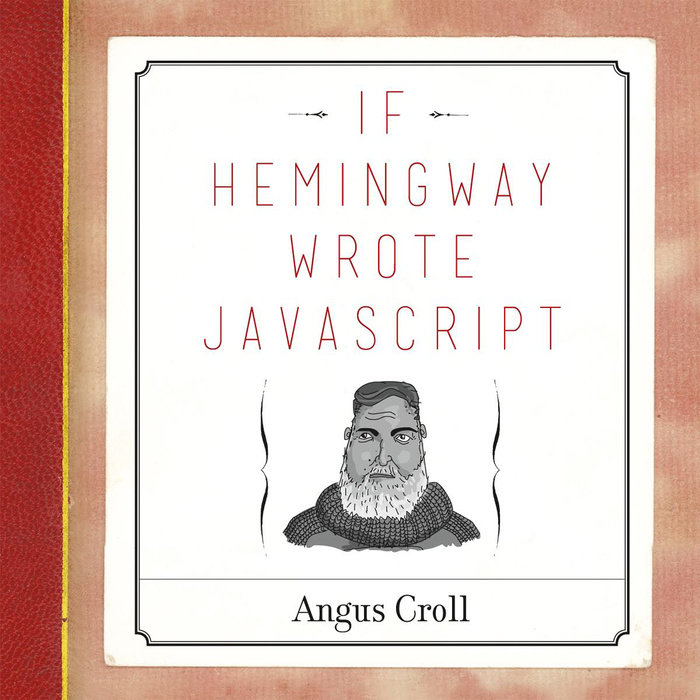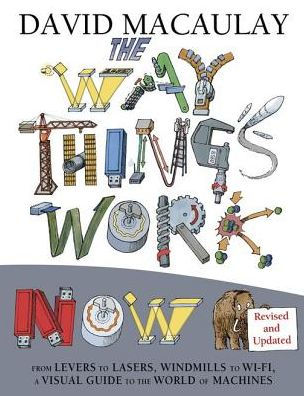I have been slowly working on that Deus Ex hacking post for months on and off now, and I’m so close to finishing it up. But I want more than one published post while I’m actually trying to appear to be a human who does things other than study for my career (hi, future employer! thanks for visiting! 💖), and I remembered I actually wanted to talk about books and writing on here, not just games and hacking.
Well, I can combine those, as usual! Here’s my ongoing list of my absolute favorite books on subjects about how the world around us works, hacking and computer systems, debugging and programming, video game design, and anything else that falls within the arts (a favored field of study). These are my ultimate non-fiction picks. These are multidisciplinary.
Favorites
⭐ Why Programs Fail by Andreas Zeller
When I was in college, I made a video called “Battle of the Debugging Books.” I went over every debugging book I could find because I was afraid of being bad at my job and I’d heard debugging was twice as hard as programming. I thought it would be fun to do a cute comparison review (it’s no longer up to my current standards) and Zeller’s topped the list in every category. The other books were good for different purposes, and anyone reading may be more familiar with The Debugger’s Handbook by J.F. DiMarzio, which is still a great reference text to have on your shelf. But nothing could compare to Zeller’s, the guy who developed the GNU Data Display Debugger (DDD).

Although all the debugging books helped me learn how to program better (people tend to believe it’s just bad programming, but errors can occur for even the most competent and credentialed engineer), Zeller’s provided me with a different mindset and methodology to approach the problems if they ever arose. He has other publications covering the topic, but I recommend this book first and foremost.

⭐ If Hemingway Wrote Javascript by Angus Croll
This is one of my favorite books of all time. People love to say there’s more than one solution to a problem, and certainly nowadays you can simply go to a website to see everyone solving the same algorithm in different ways. But this book falls in my exact intersection of study: poetry and technology.
I made a web scraping tool to create a Lorem Ipsum based on the most common words in English romance poetry: Lovem Kissem. I tend to make poetry bots or bots that look for lipograms more than anything else. So when I found If Hemingway Wrote Javascript, I was sure I found one of the most important books I could for my career. This was also before I ever studied computer science (I’d been learning for a few years before I began my degree), and it helped me with any wavering confidence when I tackled a problem. I also just find books like this quite pretty conceptually.
The Manga Guide to Cryptography (or anything else)
I recommend the Manga Guides to anyone who is interested in learning more about a technical or scientific subject. When I started writing this post, I actually wanted to point to The Manga Guide to Electricity because it will provide a useful foundation to a wider group of people, but the Cryptography book is actually my favorite of the series.

I love comics and anything that presents information in a different way, especially if there is a narrative to follow. People can latch on to the emotional impact of narrative, and having context will make the subjects easier to learn. It’s a great series to check out if you feel you’re struggling to understand a topic!
But cryptography is one of my favorite fields of study, so to me it’s just a fun book to read and brush up on my cryptography foundations!
Wizards, Aliens, and Starships: Physics and Math in Fantasy and Science Fiction by Charles L. Adler
I’m a creative writer always expanding my genre horizons, but one of my struggles writing science fiction was the inability to write soft sci-fi. If I couldn’t imagine how it would work in real life, how something could be technically or scientifically possible, I was unable to write it before.
Since I over-intellectualize my problems and care immensely about improving my craft, I thought of a few ways to fix this:
- read books and information about how other science fiction authors came up with their ideas,
- learn what other scientists and technologists thought about how realistic science fiction was,
- just build worlds without using checklists where I had to determine things like how fictional taxes and vehicles worked.
The first thing I naturally did was 2: seek out this book on how fictional worlds could function in the real world.
Adler explains the science behind science fiction and fantasy and whether or not these worlds are realistic, probable, and accomplishable, or unlikely or impossible to ever occur. On top of helping me break free from hard sci-fi limitations, it’s also just very fun to read!
How the World Works
The Works: Anatomy of a City by Kate Ascher
This is an older (mid-2000s) book about the way New York City operates, intended for students of architecture (I like reading books on art and architecture in particular), but it’s also useful for the curious who want an idea of how everything around us functions. It covers topics like freight, transportation and bridges and tunnels, sewage systems, and city-wide communication.
I also considered reading this book necessary for my research on upcoming fictional secure network design posts, but all this information helps me appreciate all the public workers, and recognize the impact of each individual function of a system. Who doesn’t love a good overview, the big picture, built up from smaller pictures? It is still focused on one specific city and from 2007, but very useful as an introduction to the way cities work.
Underground Cities: mapping the tunnels, transits and networks underneath our feet by Mark Ovenden
Similar to Kate Ascher’s book, Underground Cities reveals what we don’t know about functional underground spaces, but Mark Ovenden covers these worldwide. I’ve been slowly working on a cute “secure network design in fiction” series with the intent of first discussing underground networking, and I always go to a great reference text first.
Ovenden takes the reader across the world to underground systems and details the history and development of these locations, even sometimes including how they work and diagrams, photos, and maps covering each structure’s past or current maintenance.
All in all, it covers systems and structures I was personally curious about. I recently visited the Dallas Pedestrian Network, an underground tunnel system intended for patrons, employees, and residents of Downtown Dallas’ high-rises, and my curiosity peaked!

The Way Things Work Now (and anything else by David Macaulay)
David Macaulay doesn’t want anyone to be left in the dark. Like him, I don’t enjoy the idea of “black-box” design or technology, where users aren’t aware of how their devices or applications work. His book series on the underlying concepts and functions of machines is for children, but if you know nothing about how something works, starting where children start is actually a good idea. I do it all the time with subjects I am completely new to. As adults, we learn things much faster, so you’ll be able to grasp and run with these concepts quicker than you’d expect!
I always felt behind people in regards to machines, computers, and physics throughout my degree because I didn’t grow up with constant internet and computer access, and I’m not from a white collar family that practiced engineering or development. I didn’t even own my own laptop until I was 19 years old. I appreciate any series that helps people gain a foundation in the mysteries of technology, and I believe I’ll always owe part of my future success to the books that helped me learn what everyone else was taught earlier. I treasure Macaulay’s work for this!
Art & History

Understanding Comics by Scott McCloud
This is one of those books that you will have been assigned to read if you study literature, art, design, or information science, but I read it before I was ever assigned to in class because making comics is a thing I do for art therapy, and sometimes, just for fun. Understanding Comics also touches on human psychology, information architecture and visualization, and simplification of art concepts in cartooning–all of which help you approach the world with a different point of view.
I read and re-read this book because of my own interests in making comics and because I kept taking design, art history, and literature courses in graphic novels. Each time, I’ve learned something new or elevated my understanding of a concept outside of art and design itself. I consider it absolutely essential reading!
Vermeer’s Hat by Timothy Brook
Vermeer’s Hat: The Seventeenth Century and the Dawn of the Global World by Timothy Brook is admittedly more of a meandering text about globalization, covering the topic of world trade throughout the 17th century when he felt things were changing among nations and continents. Brook walks people through this history by focusing on several paintings by Johannes Vermeer (and a couple by Hendrik van der Burch and Leonaert Bramera as well).
I think this book is easy to get bored sitting through if none of these topics are of interest to you, and he’ll sometimes cover art terminology that I think detracts from the point. It’s less concise than many of my other suggestions. But I’m always interested in the interconnectedness of the world and art history itself (to the point that I sit through Bruno Munari’s books on shapes and Simon Garfield’s book on the single color mauve), so I found Brook’s worldview intriguing enough to pick it up. He takes an interesting approach to understanding history and I always enjoy a unique narrative.
How to Hide an Empire by Daniel Immerwahr
How to Hide an Empire: A History of the Greater United States is about U.S. imperialism, and it covers territories you may not even know exist, if you’re not a big geography person. (Admittedly, I’m not a geography person myself. The only reason I know some countries and islands exist is because I looked for a map of all existing data centers in the world.)
Immerwhar brings the reader to the unseen, ignored territories of the U.S. empire, reshaping his own view of the United States’ people and what it means to be “an American” while investigating the independence and history of former U.S. colonies and territories. Popularized among journalists because of his chapter on “white gold” AKA guano AKA bird shit. It’s a book for the uncounted in the history of the U.S. Excellent reading for anyone who already has a background in U.S. history but wants something to delve even deeper. Immerwhar is also a fantastic writer and captivates his reader.
got recommendations?
I’m always growing and learning, and I’m always interested to know more about history, especially art history. (If I weren’t pursuing cybersecurity, I would probably be a historian of some sort, if not a comparative literature professor.)
I prefer books where the authors utilize an interesting narrative technique to explain a concept, so many common non-fiction recommendations won’t make my list.
But if you’re a curious person who always wants to know how the world functions and how it came to be this way and you have a recommendation for me, I’d love to hear your suggestions! This list will continue to grow as I do.
